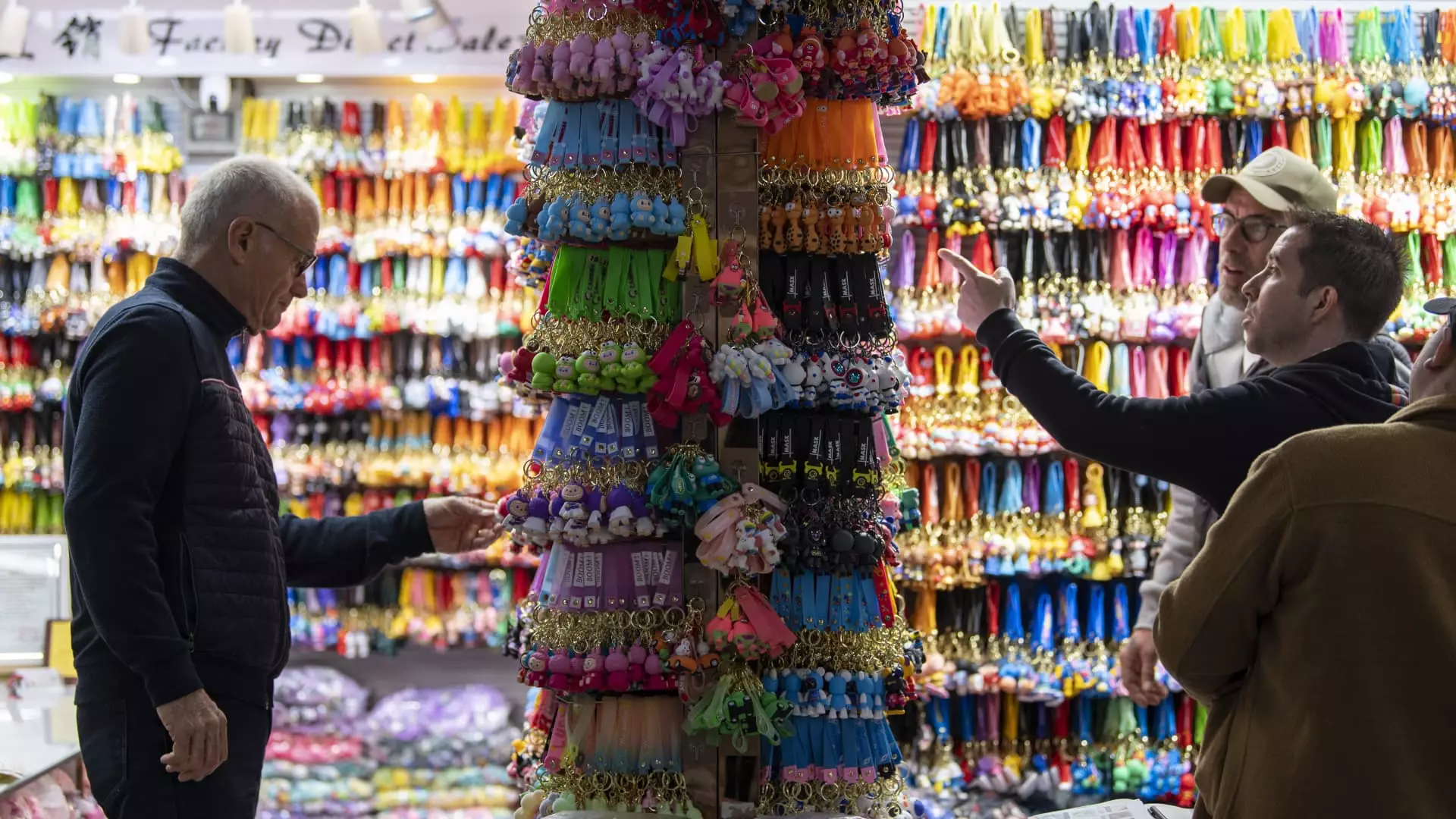Every year, as the vibrant colors of autumn fade, the unmistakable sounds of Christmas jingles begin creeping onto our store shelves. Dubbed “Christmas creep,” this phenomenon reflects the retail industry’s attempt to harness the lucrative holiday shopping spree by pushing festive merchandise earlier into the calendar year. However, 2023 has introduced a significant disruptor — tariffs on imported goods from China — which threaten to complicate not only the holiday shopping season but also the broader economic landscape. This situation underscores a crucial question: Will American consumers have access to their beloved holiday goods, or will they be left staring at empty shelves?
The Grinch of Tariffs
In a political climate riddled with uncertainty, tariffs have emerged as modern-day Grinches, stealing not just Christmas spirit but also hard-earned income from American consumers. The aggressive tariffs spearheaded by former President Donald Trump — initially announced at an alarming 34% and later increasing to 145% on certain imports — have forced American retailers to halt orders from Chinese suppliers. This stoppage has sent reverberations through supply chains far and wide, disrupting not just the supply of Christmas ornaments and toys but also the jobs that depend on these intricate international relationships.
Retailers are now caught in a proverbial tug-of-war, striving to keep pace with shifting political winds while ensuring that their shelves are stocked with holiday goodies. As noted by industry experts, the clock is ticking. Confusion over tariffs has already caused a significant reduction in production, impacting everything from spoon manufacturing to the steel mills that supply the raw materials. The interdependence fostered by globalization might have brought cost efficiencies, but it also left us vulnerable to these calculated political moves.
Supply Chain Strains
The intricacies of global supply chains have created a perfect storm for American retailers as they scramble to navigate the fallout of these tariffs. Lockdowns and shipping delays resulting from the pandemic had already put a strain on these systems, and now compounded by tariff-induced uncertainty, many retailers fear they will miss out on the critical holiday shopping window. With electronic products, for instance, needing to be ordered significantly ahead of time to ensure their availability during peak shopping days, the managers at these manufacturers are feeling the pressure.
One notable point is the reliance of American businesses on Chinese suppliers. According to Goldman Sachs, a staggering 36% of U.S. imports from China are sourced exclusively from mainland suppliers. This means that alternative sourcing methods cannot be executed overnight. The resulting bottlenecks could lead to skyrocketing prices for consumers once the holiday season officially kicks off.
Economics of Anxiety
Consider this: U.S. retailers, sensing the impending tariff disaster, began stockpiling merchandise long before the holiday season was upon them. Such foresight is commendable; however, as we edged into spring, reports indicated that imports from China dropped while exports to America had risen by a notable 9.1%. A sense of urgency has taken over as businesses have hoarded resources, but this safety cushion is beginning to dwindle. The anxiety over tariffs has stifled new orders, leading to a decrease in production — a vicious cycle perpetuating uncertainty.
Recent statistics depicting the drastic fall in cargo shipping indicate that many businesses are hesitantly waiting for tariff clarity before placing significant new orders. This trepidation could leave retailers caught in a dilemma: continue to operate under the crushing burden of tariffs or risk disappointing consumers with insufficient stock levels.
Fragile Futures Amid Tariff Adjustments
Despite the distress, there have been murmurs of potential relief measures on the horizon which seem poised to complicate the situation further. Early reports suggest that China may be granting exemptions to certain imports that were initially targeted by these tariffs, a move that could alter the dynamics of supply and demand dramatically. However, as U.S. companies are starting to cautiously resume orders, many are hedging little risks by submitting smaller amounts, thereby anxiously anticipating tariff reductions well into the year.
As pressure mounts toward the holiday shopping season, American consumers may soon find that the only options available to them come with elevated price tags. Heightened shipping costs combined with factory overflow could easily see holiday items priced beyond the reach of the average American household.
The Dichotomy of Hope and Woe
While the situation undeniably carries a taint of hopelessness, the resilience of American retailers is a sight to behold. Many are actively strategizing their next moves in anticipation of a potential easing of the tariffs. As they negotiate with Taiwanese manufacturers and ramp up discussions with other global suppliers, companies endeavor to outsmart the very circumstances that threaten to diminish their holiday sales.
If one thing is clear amid the chaos, it is that this holiday season may differ dramatically from those of years past. Christmas merchandise may still arrive, but the road to happy holiday shopping may soon be paved with higher prices and disheartened consumers. With the specter of tariffs casting a lengthy shadow, it will be interesting to see whether the spirit of the season truly survives this economic tumult.

